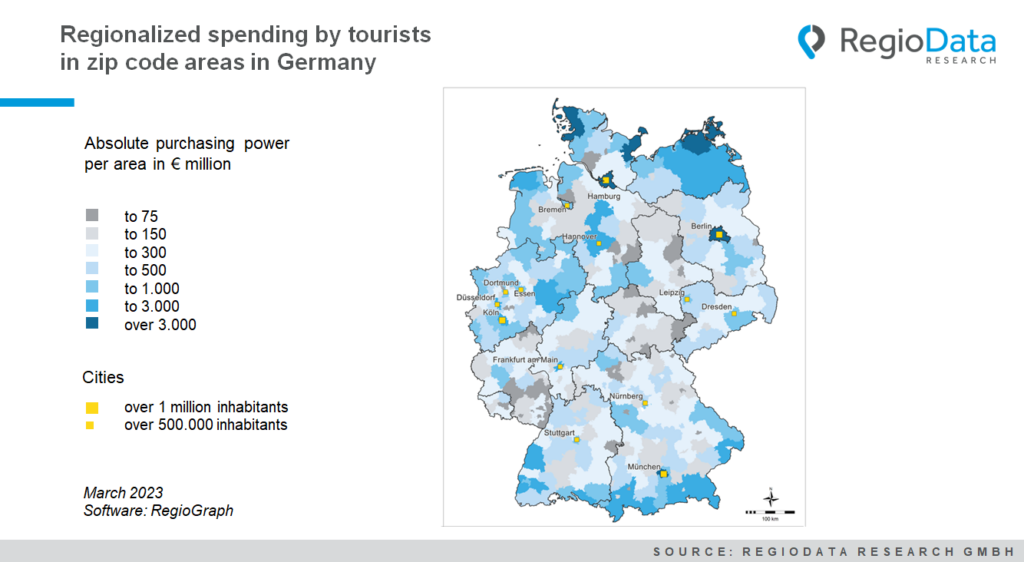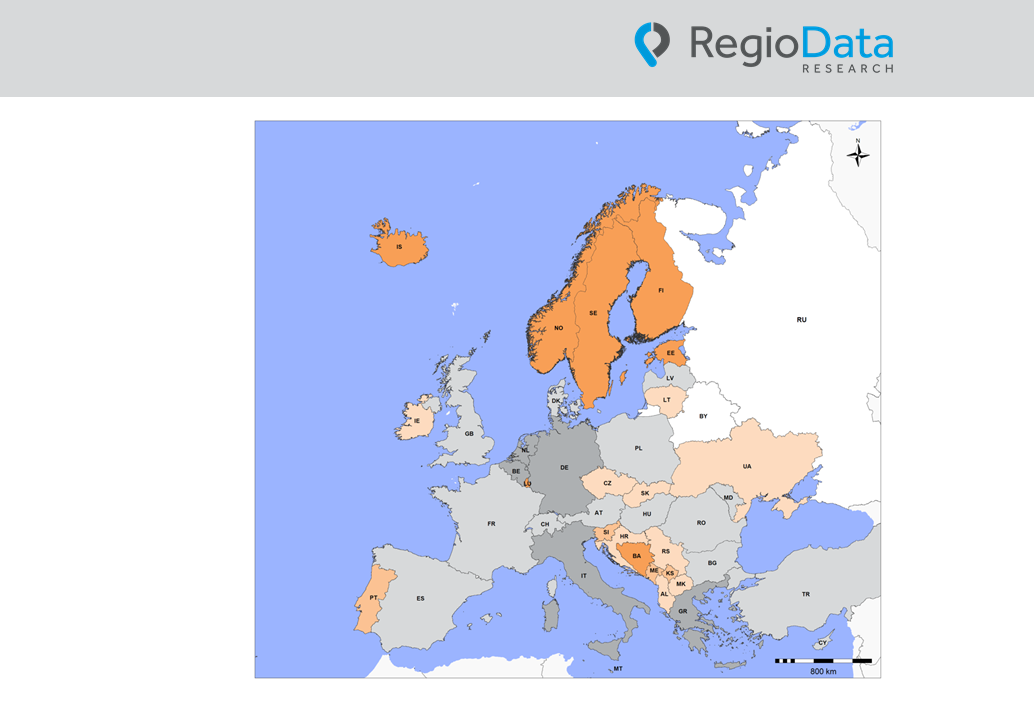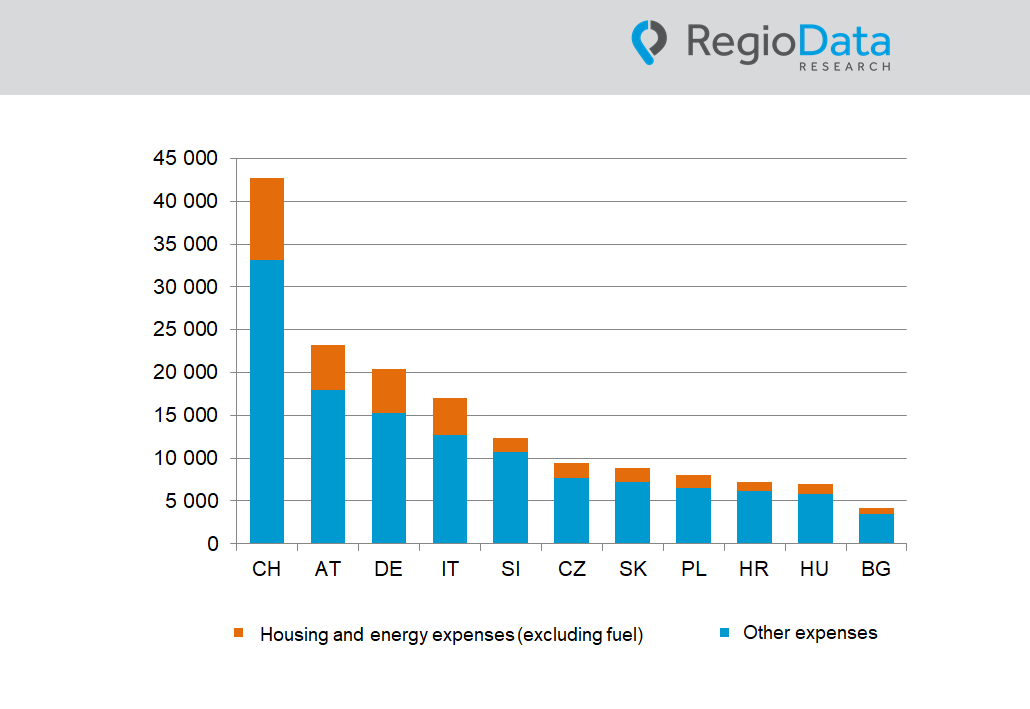GERMANY
Tourist purchasing power - Coast beats alps
In Germany, total tourist spending in 2022 was around €170 billion, a slight increase over 2021 but still well below pre-Corona levels. Compared to 2019, both overnight stays (-9%) and hospitality spending (-6%) are still significantly down.
Tourist spending power here refers to the total direct spending of local tourists who stay overnight at least once. Day trippers, shopping tourists without overnight stays, commuters etc. are not included.
The regional allocation of these expenditures shows a clear dominance of the coastal areas with approx. 26 billion euros, compared to the southern, alpine areas with approx. 18 billion euros. Germany’s northernmost county, Nordfriesland, is the main tourist magnet in the north, with almost €4 billion in tourist spending power. In addition to the many North Sea islands, the mainland region, North Sea Schleswig-Holstein, is also an attractive vacation destination. With around €3.6 billion, the district of Vorpommern-Rügen draws the second-largest tourism flow in the north, with the island of Rügen contributing the most.
The southern region, particularly Lake Constance, has a strong tourist appeal. The east, apart from Berlin, seems to be rather moderately attractive, and the more central it becomes, the lower the tourist attractiveness. This applies, in particular, to Thuringia, Hesse (excluding Frankfurt am Main, having an absolute tourist purchasing power of around €1.7 billion) and Saxony-Anhalt. Saarland and Rhineland-Palatinate do not fare as well, although the district of Bernkastel-Wittlich does stand out. Because of its three unique landscapes – the volcanic Eifel, the romantic Moselle Valley and the Hunsrück, rich in forests and meadows – the region is a popular destination for sports and nature lovers. Another exception is the idyllic lake region of Müritz. Germany’s largest inland lake is a respected vacation destination, especially for sailors.
In terms of city tourism, Berlin leads – as expected – with tourism spending of €6.9 billion, making it Germany’s number one hot spot. With tourism spending of €5.1 billion, Munich is second, followed by Hamburg with €4.4 billion. Cologne takes fourth place with spending of €1.9 billion, and Nuremberg can claim fifth place with €0.8 billion. Dresden and Leipzig are close behind.
The tourist purchasing power in the south is certainly driven by the mountain landscapes, which allow both summer and winter tourism. Practically all southern or border areas have a high tourist purchasing power. Scenic highlights such as the Königsee, but also buildings such as the castles of King Ludwig have long had an international magnet effect.
Overall, tourism purchasing power is a significant revenue generator for some industries, but as of now, it is also highly volatile to various disasters and geopolitical changes.
Share post




